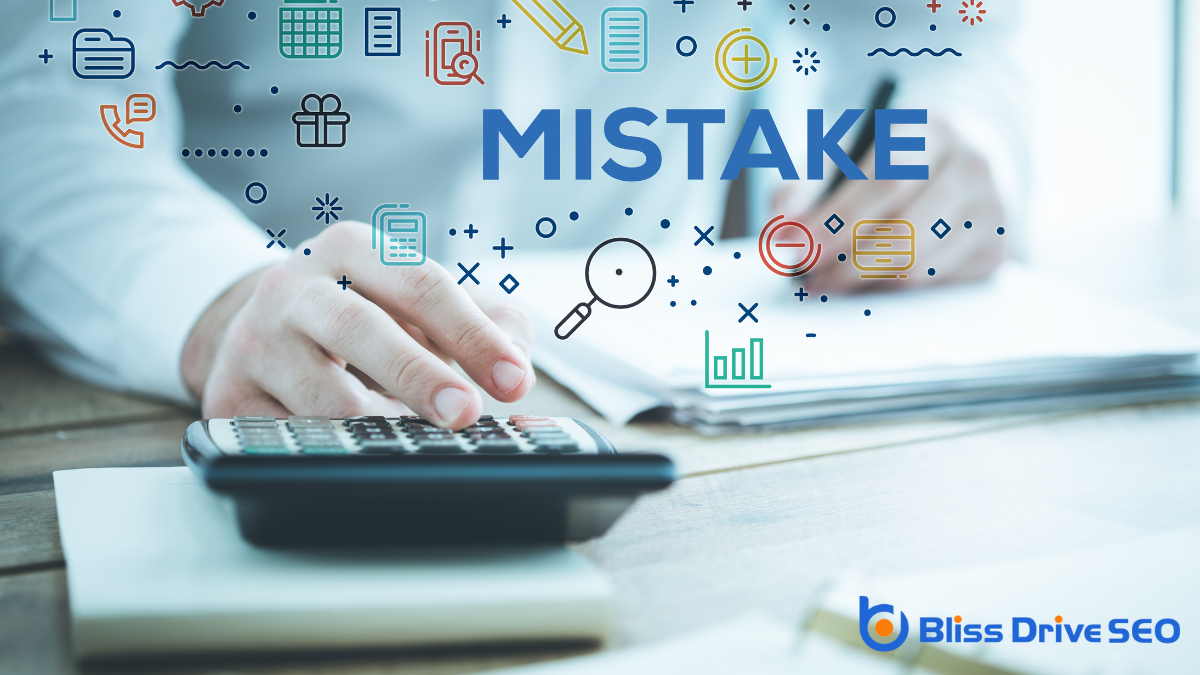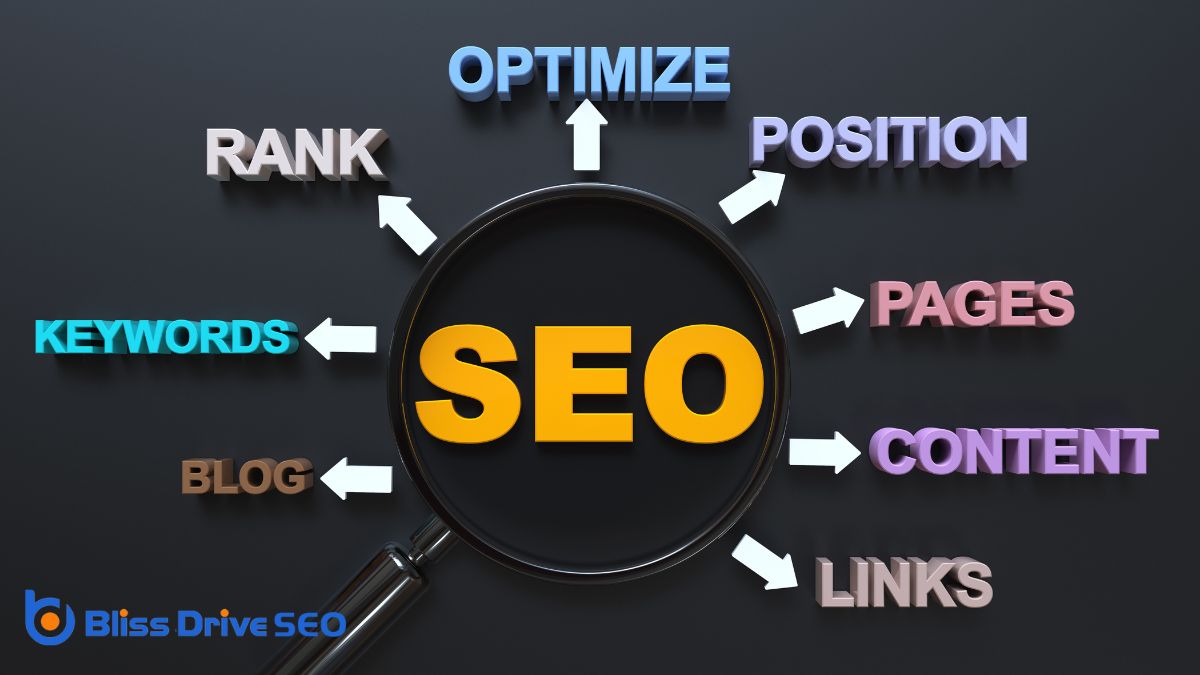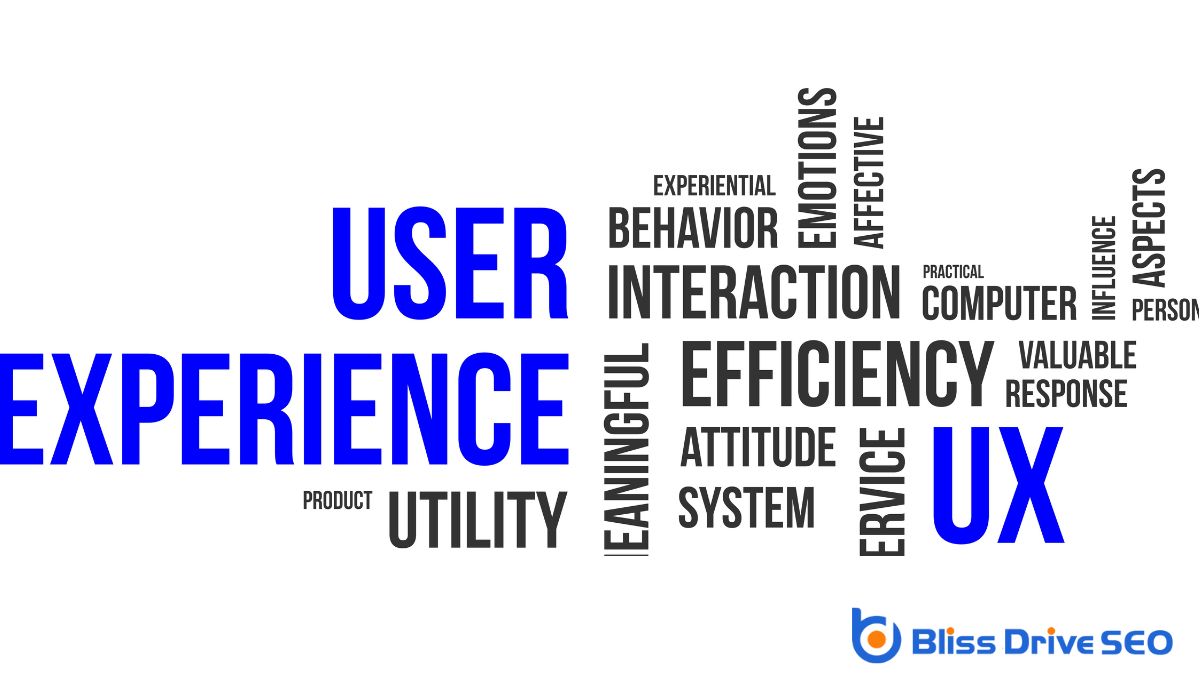PRICING
SERVICES
DIGITAL MARKETING SERVICES
COMPETITIVE ANALYSISSEO SERVICESCONVERSION RATE OPTIMIZATIONWEB DESIGNCONTENT MARKETINGPAY PER CLICKRESOURCES
Improving content readability boosts both user experience (UX) and search engine optimization (SEO). Clear and engaging content keeps users on your site longer, enhancing their interaction and reducing bounce rates. When users spend more time, search engines see this as valuable content, improving your rankings. You’ll attract a broader audience using simple language and structured content. Want to know how it impacts user engagement and conversion rates? Keep going to uncover more.

Content readability is essential when you want your audience to easily understand your message. You should aim to make your writing clear and concise, ensuring it's accessible to a broad audience. This involves using simple language, shorter sentences, and avoiding complex jargon unless it's necessary and explained.
Think about how your readers process information. Break up large blocks of text with headings, bullet points, or lists to improve the flow and guide the reader through your content.
Use active voice to make your writing more engaging and direct. It helps in holding your reader's attention, making your content more relatable and understandable.
When it comes to user experience, readability plays an essential role in ensuring your audience remains engaged and informed. If your content is clear and easy to understand, users are more likely to stay on your site, explore more pages, and find value in what you offer.
Readability impacts how users perceive and interact with your site. If they can't easily digest the information, they'll quickly lose interest and leave.
To enhance readability, use concise sentences and clear language. Break complex ideas into manageable chunks, utilize bullet points, and incorporate visuals where possible.
By doing so, you help users navigate your content smoothly. A user-friendly experience builds trust and loyalty, encouraging users to return for more.
Although readability directly impacts user experience, it also plays an essential role in search engine rankings. When your content is easy to read, users are more likely to stay on your page longer.
This tells search engines that your content is valuable and relevant. Search engines, like Google, prioritize content that engages users. They consider metrics such as bounce rates and time on page, which are influenced by readability.
If users can quickly digest your content, they're more likely to find it useful and share it. This can lead to more backlinks, boosting your site's authority.
Additionally, clear and concise content often aligns with search intent, making it easier for search engines to understand and rank your content higher.
Understanding key readability metrics is essential for improving both user experience and SEO performance. When you focus on readability, you're ensuring your content is accessible and engaging.
One vital metric is the Flesch-Kincaid Readability Score, which evaluates sentence length and syllable count to determine text complexity. Aim for a score that matches your audience's reading level.
The Gunning Fog Index is another valuable tool, highlighting the number of complex words in your text. Lower scores usually mean clearer content.
Don’t forget the SMOG Index, which estimates the years of education needed to understand the text.
Finally, consider the Reading Ease Score, which helps identify how smoothly your content flows. By monitoring these metrics, you’ll enhance both comprehension and engagement.
To boost your content's readability, start by breaking up long blocks of text into shorter paragraphs and using bullet points for lists. This makes your content easier to scan and digest, keeping your audience engaged.
Use simple language that matches your audience's understanding level, avoiding jargon unless necessary. Active voice sentences are preferable since they're direct and clearer.
Incorporate headers and subheaders to guide readers through your content smoothly. They act as signposts, helping users find the information they need quickly.
Also, vary your sentence structure to maintain interest without overwhelming readers.
Finally, choose fonts and colors that are easy on the eyes. Confirm there's sufficient contrast between text and background, making sure your content is visually accessible to everyone.
You can boost your content's effectiveness by using readability assessment tools to pinpoint areas needing improvement.
These tools help you enhance clarity by suggesting simpler alternatives to complex language, making your content more accessible.
When crafting content for the web, leveraging readability assessment tools can greatly enhance the user experience and boost your SEO efforts.
These tools help you identify areas for improvement, ensuring your content is accessible and engaging. By analyzing text complexity, sentence structure, and word choice, you can create content that resonates with your audience.
Here are four popular readability assessment tools you can use:
Each tool has unique features, helping you refine your content for better engagement and search engine performance.
Clear and concise content captivates your audience, making it essential to focus on enhancing content clarity. You can achieve this by using tools designed to measure and improve readability.
These tools, like Hemingway Editor or Grammarly, provide feedback on sentence structure, word choice, and overall readability score. They highlight complex sentences, suggesting simpler alternatives, guaranteeing your message is easily digestible.
This approach not only boosts user engagement but also positively impacts your SEO efforts, as search engines favor content that's easy to understand. By utilizing these tools, you guarantee your content remains accessible to a wider audience.
Although complex language can sometimes demonstrate expertise, it often alienates readers, making it essential to simplify your content.
You want your audience to engage and understand your message effortlessly. Using tools to measure and improve readability can greatly assist in this task.
Here are four tools to evaluate:
Effective readability is critical for user engagement, as it directly influences how your audience interacts with your content.
When your text is clear and easy to understand, readers feel more comfortable and motivated to continue reading. They’ll spend more time on your page, exploring your material and absorbing the information you provide.
This positive interaction can lead to increased trust and a stronger connection with your audience.
When your text is easy to read, more people will engage with your content, leading to higher conversion rates.
By communicating clearly, you build trust with your audience, making them more likely to take action.
If you want to boost user engagement on your website, simplifying your text is a game-changer. When users find your content easy to read, they're more likely to stay and interact.
Here's how simplifying your text can enhance engagement:
Trust is the cornerstone of any successful online interaction, and clear communication is key to building it. When you communicate clearly, you show users you value their time and effort. They’re more likely to believe your claims and feel confident in your products or services. Readable content makes it easy for visitors to grasp your message quickly, reducing frustration.
When users trust what they read, they’re more inclined to take action, whether it’s signing up for a newsletter or making a purchase. This trust translates into higher conversion rates, which benefits your business.
One of the biggest readability mistakes to avoid is using overly complex language. When you use complicated words or jargon, you risk alienating your readers. They shouldn’t need a dictionary to understand your content.
Here are some common mistakes you should avoid:

Improving readability isn't just about fixing mistakes; it's about creating content that truly connects with your audience.
Consider a case study from a popular health blog. They simplified their language, broke up dense paragraphs, and added bullet points. As a result, they saw a 30% increase in time spent on page and a 25% reduction in bounce rate.
Another example is an e-commerce site that revamped its product descriptions using plain language and clear headings. Their conversion rates improved by 15%.
These cases illustrate that when you prioritize readability, you enhance user experience and boost SEO performance. Your content becomes more engaging, and users appreciate the clarity, ultimately leading to better search engine rankings and increased audience trust.
Enhancing content readability is essential for both user experience and SEO success. By making your content easy to understand, you keep users engaged and encourage them to return, positively impacting your site's conversion rates. Additionally, search engines favor content that's clear and accessible, boosting your rankings. Avoid common readability mistakes and focus on strategies to improve it. By doing so, you'll create a seamless experience that benefits both your audience and your search visibility.
Structured data, or schema, greatly impacts UX and SEO by helping search engines better understand your content, which boosts visibility and aids user interaction. With schema markup, your website becomes more attractive to search engines and users by providing rich snippets like reviews and event details. This not only increases click-through rates but also presents essential information right in search results, enhancing user experience. Curious about maximizing your site's potential?

While maneuvering through the complexities of SEO, understanding structured data and schema markup can give your website a significant edge.
You should think of structured data as a way to help search engines understand your content better. It’s like providing a roadmap so they know where everything is and how it should be interpreted.
By implementing schema markup, you’re fundamentally tagging your information with code that clearly communicates the type of content you’re offering, whether it’s a recipe, an event, or a product.
This practice makes your site more attractive to search engines, which can lead to higher visibility in search results.
You’ll find your content more likely to appear in rich snippets, enhancing your click-through rates and giving users a better experience.
Structured data plays an essential role in SEO by enhancing how search engines interpret your website's content. It helps search engines like Google understand the context and relationships between elements on your pages. This understanding can lead to rich snippets and improved search visibility.
Here’s how structured data impacts your SEO:
When you incorporate schema markup into your website, you greatly enhance user experience by making information more accessible and engaging.
Think of schema as a translator, helping search engines understand your content better, which in turn makes it more user-friendly.
Users can quickly grasp the essential information, like ratings, event details, or product specifications, right from the search results.
Structured data can greatly boost your search visibility by enhancing search result features, making your content stand out.
You’ll notice increased click-through rates as users are drawn to rich snippets and additional information right on the results page.
By leveraging structured data, you can considerably enhance your website's visibility in search results.
This powerful tool helps your site stand out with rich snippets, increasing its chances of attracting attention. Structured data allows search engines to understand your content better, which can lead to special features appearing in search results like reviews, events, or product information.
Here are some features you might see:
Although optimizing your site for search visibility might seem overwhelming, leveraging structured data can greatly boost your click-through rates.
When you add structured data, search engines understand your content better, which can lead to enhanced search result features like rich snippets. These snippets display additional information directly in search results, making your link more attractive to users.
Imagine users seeing star ratings, product prices, or even event dates right away. They’re more likely to click your link over others that lack this detailed information.
Structured data helps your content stand out, thereby increasing the likelihood of users visiting your site. By presenting clear, relevant details, you make your search listing more appealing, encouraging users to choose your content over competitors'.
When you use schema markup, you can access a variety of rich snippets that enhance your search results.
For instance, product information can be displayed in a more appealing way, event details can be better highlighted, and recipe content can stand out with ratings and cooking times.
Harnessing the power of structured data, product information displayed through rich snippets can greatly enhance your website's search engine visibility.
By using schema markup, you enable search engines to better understand your content, which, in turn, improves user engagement and click-through rates. This is particularly effective when showcasing product details directly in search results.
Here’s how you can benefit:
Incorporating these elements can set your site apart from competitors.
To elevate your event marketing strategy, consider leveraging structured data to enhance event details in search results through rich snippets. By implementing schema markup, you can guarantee that your events stand out with essential information right on the search results page.
Imagine potential attendees seeing your event's date, location, and ticket availability without having to click through to your website. This visibility can increase click-through rates and drive more traffic to your event page.
Structured data helps search engines understand your event content better, leading to rich results that capture users' attention. It's not just about being seen; it's about providing value upfront.
When users see all they need at a glance, they're more likely to engage, boosting both user experience and SEO performance.
Recipes can greatly benefit from structured data, with several types of rich snippets available to enhance your content's visibility.
Implementing schema allows search engines to present your recipes in a more engaging way, driving more traffic to your site.
Here's how you can highlight your recipe content:
These elements make your recipes more attractive and accessible.
Although it might seem intimidating at first, implementing structured data on your website is an essential step in enhancing your site's visibility and search engine performance.
Start by identifying the key elements on your site that can benefit from structured data. Use Google's Structured Data Markup Helper to create your markup without a sweat. Simply select the data type, highlight the relevant information on your webpage, and generate the HTML.
Once you've got your markup, add it to your site's code. Test using Google's Rich Results Test to verify everything's correct.
Implementing structured data can greatly boost your site's visibility, but it's important to steer clear of common pitfalls that could undermine your efforts. Missteps in schema markup can lead to missed opportunities in search engine optimization.
Here are four common mistakes to avoid:
When you’re working to enhance your website's SEO with structured data, using the right tools to test and validate your markup is vital.
These tools guarantee your schema is accurate, preventing errors that could harm your SEO efforts. Google's Rich Results Test is a reliable choice, providing insights into how your data appears in search results.
The Schema Markup Validator is another excellent option, checking your code against Schema.org standards. Both tools offer straightforward feedback, helping you pinpoint and correct issues quickly.
Don’t overlook Bing's Markup Validator for additional perspectives on your schema's performance.
Regularly testing and validating guarantees your structured data is always optimized, ultimately enhancing user experience and search engine visibility.
Stay proactive and keep your schema in top shape.
After ensuring your structured data is error-free with the right tools, it's inspiring to see how real-world examples demonstrate the power of schema markup.
Consider these success stories:
These cases show that structured data can considerably improve both UX and SEO.

As technology rapidly evolves, staying ahead in the SEO game increasingly hinges on mastering future trends in structured data.
You'll find that voice search is growing, and structured data plays a vital role in optimizing for it. By tagging content with schema, search engines can better understand and deliver your information to voice assistants.
AI and machine learning are also reshaping SEO. Implementing structured data will help algorithms interpret your content more accurately, enhancing visibility.
Furthermore, Google's continuous updates demand adaptive strategies. Embrace rich snippets and enhanced SERP features by using schema to boost your site's appeal.
Staying informed about these trends guarantees that your SEO efforts remain effective and your content remains accessible in an ever-evolving digital landscape.
By embracing structured data and schema markup, you can markedly enhance both your SEO and user experience. Implementing these tools boosts your search visibility and enables rich snippets that attract more clicks. Avoid common pitfalls by testing and validating your markup with reliable tools. Learn from successful case studies and stay informed about future trends to keep your strategy effective. By doing so, you’re setting the stage for improved engagement and higher rankings.
Core Web Vitals are essential for enhancing both user experience (UX) and search engine optimization (SEO). They measure your site's loading speed, interactivity, and visual stability. Fast-loading pages keep users engaged, while smooth interactivity and stability make your site more intuitive and reliable. Google ranks your site better when it performs well in these areas, driving more traffic. Want to learn more about making your website a user-friendly and SEO powerhouse?

Core Web Vitals are essential metrics that help you measure the user experience of your website. They're designed to guarantee your site loads quickly, is responsive, and delivers a seamless experience.
By focusing on these metrics, you're not only improving your site's performance but also enhancing visitor satisfaction. You might wonder why that's important—well, user experience directly impacts engagement and retention. When users have a positive experience, they're more likely to stay longer, explore more, and return.
Understanding these metrics helps you identify areas of improvement, making your site a pleasure to navigate.
When you're improving your website's performance, focus on page loading speed and visual stability metrics.
These components are essential for enhancing user experience and keeping visitors engaged.
You'll want to guarantee your pages load quickly and elements remain stable as they appear on the screen.
Page loading speed is an important aspect of Core Web Vitals that directly impacts user experience and search engine rankings. When a page loads quickly, users can interact with content almost immediately, enhancing their overall experience.
Conversely, slow-loading pages lead to frustration and higher bounce rates. Improving your site's load speed can greatly affect its performance and visibility.
Consider the following actions to optimize page loading speed:
Focusing on these elements enhances user satisfaction and boosts SEO.
Although often overlooked, visual stability is crucial for a positive user experience and is a key component of Core Web Vitals.
Imagine clicking a button on a webpage, only for the page to shift unexpectedly, and you end up clicking something else. It's frustrating, right? This issue is what visual stability metrics aim to address.
Cumulative Layout Shift (CLS) is the metric used to measure visual stability. It calculates how much a webpage's content moves around unexpectedly. A low CLS score means fewer shifts, ensuring users interact with your content as intended.
Focus on elements that load asynchronously or take time to render. By improving CLS, you not only enhance user satisfaction but also boost your website's SEO performance.
Understanding Core Web Vitals is crucial because they directly influence user experience on your website.
These vitals measure how users perceive the performance, speed, and responsiveness of your site. When optimized, they guarantee visitors have a pleasant and seamless interaction.
Here's how they impact user experience:
When it comes to SEO rankings, Core Web Vitals play an essential role in determining how search engines perceive and rank your site.
Google uses these metrics to assess your site's performance, impacting your position in search results. Core Web Vitals focus on three main areas: loading speed, interactivity, and visual stability. If your site excels in these areas, it's more likely to rank higher because search engines prioritize a smooth user experience.
A fast-loading site with a responsive design keeps users engaged, reducing bounce rates and improving dwell time. These factors signal to search engines that your content is valuable.
To measure Core Web Vitals effectively, you need to utilize the right tools and understand the key metrics involved. Core Web Vitals focus on three main elements: loading, interactivity, and visual stability. Start by using tools like Google’s PageSpeed Insights or Lighthouse. These tools provide actionable insights, helping you track and analyze your site's performance.
Consider these steps:
Understanding these metrics enables you to enhance user experience and optimize your site effectively.
Although optimizing loading performance can seem intimidating, starting with the basics can make a significant difference.
Begin by compressing images, since large files slow down page load times. Use tools like ImageOptim or TinyPNG to reduce file sizes without sacrificing quality.
Next, leverage browser caching to store frequently used resources on users’ devices, speeding up future visits. You should also consider minimizing CSS, JavaScript, and HTML. Tools like UglifyJS or CSSNano can help strip unnecessary characters, improving load speeds.
Furthermore, prioritize above-the-fold content to load first, ensuring users quickly see essential information.
Implement a content delivery network (CDN) to distribute your site’s content across multiple servers worldwide, reducing load times for global users.
These strategies collectively enhance user experience and improve your site’s performance.
For a superior user experience, enhancing interactivity is key to keeping users engaged and satisfied with your site.
You should focus on making your site responsive and intuitive. Users expect immediate feedback when they interact with your elements.
Here are some ways to enhance interactivity:
When it comes to user experience, guaranteeing visual stability on your website is essential for maintaining user trust and engagement.
Users get frustrated when page elements shift unexpectedly as they browse. This can lead to accidental clicks, poor navigation, and a lack of confidence in your site. To avoid this, focus on minimizing layout shifts.
Reserve space for images and ads so they don’t push content around. Implement CSS aspect ratios to guarantee images load properly. Preload important fonts to prevent layout adjustments as text appears.
Monitor your site’s Cumulative Layout Shift (CLS) score to identify problem areas. By prioritizing visual stability, you’ll enhance the user experience and keep visitors happily engaged with your content.

To truly enhance your site's performance, integrate Core Web Vitals into your SEO strategy. This involves focusing on key metrics that impact user experience and search rankings.
Start by optimizing your site's loading speed and ensuring content becomes visible quickly. Users appreciate fast sites, and search engines reward them with better rankings.
Here's how you can begin:
Incorporating Core Web Vitals into your website strategy is essential for enhancing both user experience and SEO performance. By focusing on loading performance, interactivity, and visual stability, you’ll create a seamless experience for your visitors. This not only boosts your search rankings but also keeps users engaged and satisfied. So, take action now to measure and improve your Core Web Vitals, and watch as your site’s performance and visibility soar.
Your site's structure plays an essential role in shaping user experience and SEO. It acts like a map, helping visitors find what they need efficiently and engagingly, while also guiding search engines to crawl and index effectively. A well-organized structure, including logical hierarchies and internal links, guarantees a seamless experience and improved search rankings. By fine-tuning these elements, you enhance your website's professionalism and trustworthiness. Explore more ways your site's architecture impacts both users and search engines.

A well-organized site structure acts as a roadmap for users, guiding them seamlessly through your website. When you design your site, think about how visitors will navigate from one page to another. A clear structure helps them find information quickly, enhancing their overall experience.
It reduces frustration and increases the likelihood they’ll stay longer, explore more pages, and engage with your content. Consider organizing your content into logical categories and using intuitive navigation menus. When users can predict where to find information, they feel more in control and satisfied.
Use consistent layouts and recognizable patterns to create a sense of familiarity. Remember, a well-structured site not only supports user experience but also reflects professionalism and credibility, encouraging users to trust and return to your site.
When you're optimizing your website, remember that site structure plays an essential role in how search engines crawl and index your pages. A clear, intuitive structure helps search engines navigate your site more efficiently, guaranteeing that all important pages are discovered and indexed.
Use a logical hierarchy where your main pages branch into subpages. This organization aids search engines in understanding the relationship between different parts of your site.
Avoid orphaned pages, as they can be missed by crawlers. Ascertain that every page is linked to at least one other page.
Create a sitemap to guide search engines through your site. A well-structured site not only improves crawling but also boosts your SEO, making your content more discoverable to users searching for relevant information.
To design an effective site architecture, start by prioritizing user experience and search engine optimization equally. Consider your users’ journey on your site and guarantee easy navigation. Use a logical hierarchy with categories and subcategories, so visitors and search engines can understand your structure.
Implement a clean, intuitive design, avoiding clutter and guaranteeing a short path to key content. Maintain consistent navigation across all pages, with descriptive labels that match users’ expectations. This clarity helps users find what they’re looking for quickly, enhancing their experience.
For SEO, include relevant keywords naturally in your URL structure and page titles. Keep URLs simple and descriptive. Guarantee fast loading times by optimizing images and scripts.
Pay attention to mobile responsiveness, as a mobile-friendly design is essential today.
Building on the foundation of a well-structured site architecture, internal linking plays a significant role in enhancing both user experience and search engine optimization. When you use internal links effectively, you guide users smoothly through your site, helping them discover related content with ease.
This seamless navigation keeps users engaged, reducing bounce rates, and encouraging them to explore more of what you offer.
From an SEO perspective, internal links distribute page authority and importance across your site, signaling to search engines which pages are most valuable. They help search engines crawl your site more efficiently, ensuring that important pages get indexed.

Why do so many websites struggle with site structure despite its importance? Often, it’s due to common mistakes that are easily overlooked.
One major error is a lack of logical hierarchy; users and search engines should effortlessly navigate your site. Avoid this by organizing your content into clear categories and subcategories.
Another mistake is having broken links, which frustrate users and harm your SEO. Regularly check and fix these to maintain a smooth experience.
Overloading your site with too many pages can also confuse visitors. Keep your structure streamlined by only including essential pages.
Finally, neglecting mobile optimization is a big misstep. Verify your site is mobile-friendly, offering the same seamless navigation on any device.
To sum up, your site's structure plays a pivotal role in both user experience and SEO. By organizing content logically, you make it easier for users to navigate and for search engines to crawl and index your pages. Effective site architecture and internal linking strategies enhance visibility and engagement. Avoid common pitfalls by planning your structure carefully, ensuring your site is intuitive and search-friendly. Prioritize these elements, and you'll create a powerful, user-centric online presence.
To add multiple locations to your Google Business Profile, start by setting up a Business Account. Manually enter details for each location, ensuring name, address, and phone number consistency. Next, utilize Google's bulk location management tool to efficiently update details across all locations. Verify each one individually following the provided instructions for enhanced credibility. Maintain this information regularly, and you'll discover more strategies for managing your profiles.
If you're managing a business with multiple locations, understanding the importance of a Google Business Profile is essential. It acts as a digital storefront, letting potential customers find you easily. By having a profile, you increase visibility across Google Search and Maps, making it easier for people to choose your business over others.
Each location can showcase its unique offerings, contact details, and opening hours, ensuring customers get accurate information. Your Google Business Profile also allows customer interaction through reviews and Q&A, enhancing trust and credibility.
It helps you understand customer preferences by providing insights into how customers find and interact with your business. For multi-location businesses, a well-managed profile means consistent branding and communication, vital for maintaining a strong presence in competitive markets.

Building on the importance of a Google Business Profile for multi-location businesses, setting up your Google Business Account is the next essential step.
First, visit the Google Business Profile website and click "Manage now." Use an existing Google Account or create a new one dedicated to your business operations.
After logging in, you'll be prompted to enter your business name and primary location. This information acts as the foundation of your account. Pay attention to accuracy, as it impacts how customers find you online.
Once the basics are set, you'll receive a verification code by mail to confirm your location. Input this code to activate your account.
Completing these steps guarantees your business is ready to manage multiple locations effectively.
To manually add multiple locations to your Google Business Profile, start by preparing all the necessary information for each location.
Once you have everything ready, access your Google Business Dashboard. From there, you can enter each location individually, ensuring all details are accurate.
Before diving into adding multiple locations manually, you'll want to gather all the necessary information to guarantee a smooth process.
Start by compiling a list of each location’s name, address, and phone number. Consistency is key, so make sure these details match what’s on your website and other marketing materials.
It's also essential to know the categories that best describe your business, as they help potential customers find you.
Take note of the operating hours for each location, ensuring they're accurate and up-to-date.
If your locations have unique attributes or services, make a note of these too.
Finally, collect any images that highlight your business, such as logos or storefront photos, to enhance each listing’s appearance and credibility.
With your location information in hand, you're ready to add multiple locations to your Google Business Profile manually.
First, access the Google Business Dashboard. Log in to your Google account and search for "Google Business Profile Manager" or simply navigate to business.google.com.
Once logged in, you'll find your existing business profile. If you're managing multiple businesses or locations, you'll see your business names listed there.
Look for the option that says "Add location" or "Manage locations." It's essential to guarantee you're in the right account, especially if you manage several profiles.
This dashboard is your control center, helping you manage all aspects of your business information.
Stay focused on this step, as it sets the stage for adding each location accurately.
Adding each location manually to your Google Business Profile might seem intimidating at first, but it's a straightforward process.
First, log in to your Google Business account and navigate to the dashboard. Click on "Add location" and begin by entering the business name and address.
Make certain to provide accurate details to avoid any discrepancies. You'll also need to select the correct business category and add a phone number and website if applicable.
Once you've filled in the necessary information, click “Submit.” Repeat this process for each location you want to add.
Don’t rush—double-check each entry for accuracy. This guarantees customers find the right information and improves your business's online presence.
Consistency across all entries is vital for search visibility.
Streamline your location updates by using Google's bulk location management tool.
The bulk upload process lets you efficiently manage multiple locations with just a few clicks.
It's essential to guarantee data accuracy to maintain a consistent and reliable business profile.
Efficiently managing multiple business locations on Google can be a challenging task, but using bulk location management tools simplifies the process and saves time.
By accessing Google Business Profile Manager, you can update details for all your locations in one go. This tool allows you to modify information like operating hours, contact details, and special offers without individually editing each location.
With bulk management, you avoid repetitive tasks and reduce the risk of errors. It guarantees consistency across all your business locations, enhancing your brand's reliability.
When changes occur, such as holiday hours or promotions, you can swiftly apply these updates across your entire network. This approach keeps your business information accurate and up-to-date, improving customer trust and satisfaction.
When you're ready to manage multiple business locations efficiently, the bulk upload process in Google Business Profile Manager is your best ally. It streamlines updates, saving you time and effort.
Start by preparing a spreadsheet with your locations' details, ensuring each column corresponds to specific information like name, address, phone number, and category.
Once your data is organized, log in to your Google Business Profile Manager and navigate to the "Locations" tab. Click on "Add locations" and choose "Import locations."
Upload your spreadsheet, and Google will process your data swiftly. You can manage up to 10,000 locations this way, making it ideal for businesses with extensive networks.
Remember to review your entries for any potential errors before finalizing the upload.
Accurate data is key when using bulk location management for updates in your Google Business Profile. You want your customers to find you easily and trust the information they see. Mistakes can lead to confusion, lost customers, and even damage your reputation.
To guarantee data accuracy, consider these tips:

Verifying each business location is crucial to guarantee that your potential customers can trust the information they find about your business on Google.
Start by signing in to your Google Business Profile and traversing to the 'Manage locations' section. Each location will need to be verified to confirm its authenticity. Google might send a postcard with a verification code to your business address, or sometimes offer phone or email verification.
Follow the instructions carefully to complete the process. Verification guarantees your business locations appear correctly in search results, enhancing credibility. It also reduces the chances of misleading or fraudulent information being displayed.
Always keep your verification status up-to-date to maintain your business's trustworthy online presence.
To guarantee each location of your business stands out on Google, optimizing your Google Business Profile is essential. Tailor each profile to showcase the unique offerings and attributes of the respective location. Here’s how you can do it effectively:
After tailoring each Google Business Profile to highlight what makes your locations unique, maintaining consistency and keeping information current across all profiles is essential.
Confirm your business name, address, phone number, and hours are the same across all platforms. This consistency builds trust with customers and enhances your search engine optimization.
Use Google’s bulk location management tool to update multiple profiles efficiently. Regularly verify your listings to correct any inaccuracies or changes promptly. Encourage your team to notify you of any changes, confirming a quick response to updates.
Set reminders to review each profile periodically. Keeping your information consistent and up-to-date ensures customers find the correct details, leading to better customer satisfaction and improved business performance.
To effectively manage multiple locations on your Google Business Profile, start by understanding its importance and setting up your account correctly. Add locations manually or use bulk management for efficiency. Don’t forget to verify each location to guarantee credibility. Optimize each profile to suit its specific market and maintain consistency across all listings. By keeping your information up-to-date, you’ll enhance your visibility and attract more customers to each of your business locations.
You're probably wondering how site speed ties into your search engine optimization efforts. It's more critical than you might think. Google's algorithms favor fast-loading sites, and a sluggish website can harm your rankings, reducing your visibility. This impacts user experience, too, as visitors expect pages to load quickly. Stuck with high bounce rates? It might be your page speed. Curious about optimizing this? There's more to uncover about enhancing site performance.

When it comes to user experience, site speed is a critical factor that can't be overlooked.
Imagine visiting a website that takes forever to load. You’d likely feel frustrated and leave, right?
Users expect fast, seamless interactions, and slow sites can drive them away in seconds.
You need to guarantee your site loads quickly to keep visitors engaged and satisfied.
You're probably aware that Google's Speed Update emphasizes the importance of fast-loading sites in search rankings.
It’s not just about speed for speed's sake; user experience metrics and how quickly your mobile pages load play a significant role.
If your site lags, you might see your rankings drop, impacting your visibility and traffic.
Although site speed might seem like a minor detail, Google's Speed Update has considerably changed how search engines rank websites. If your site loads slowly on mobile devices, it could rank lower in search results.
Google's primary goal is to enhance user experience, and a slow website frustrates visitors. They might leave before your content even appears, which increases your bounce rate and impacts your SEO negatively.
You need to focus on optimizing your site's speed to maintain or improve your ranking. Consider compressing images, leveraging browser caching, and minimizing JavaScript.
How exactly does site speed tie into user experience metrics that influence search engine rankings? When your site loads quickly, it enhances the user experience, which search engines like Google value highly.
Visitors are more likely to stay longer and engage with your content when they’re not waiting around for pages to load. This reduces bounce rates and increases the time users spend on your site, both of which are essential user experience metrics.
Additionally, a fast site improves accessibility, enabling all users, regardless of device or connection, to have a smooth experience.
Search engines monitor these behaviors, and a positive user experience can boost your rankings. So, by ensuring your site loads swiftly, you're directly impacting how search engines perceive and rank your site.
When it comes to search engine rankings, mobile page load times play an essential role in determining your site's visibility. If your site loads slowly on mobile devices, users will likely leave before engaging with your content. Google notices this behavior and may rank your site lower in search results.
You want to guarantee your mobile pages load quickly, ideally within three seconds, to keep users engaged and improve your search engine positioning.
To achieve this, optimize images, leverage browser caching, and minimize redirects. Google's mobile-first indexing means your mobile site is the primary version considered for ranking, so its performance is imperative.
Regularly test your site's speed with tools like Google PageSpeed Insights to identify and fix issues that could affect load times.
When your site loads quickly, visitors are less likely to bounce, boosting your engagement levels.
Users enjoy a smooth experience and are more inclined to interact with your content.
While many factors influence a website's success, site speed stands out as a critical element affecting bounce rates and user engagement.
When a site loads quickly, users are more likely to stay and explore rather than leave in frustration. A slow-loading page often results in a higher bounce rate, meaning visitors exit before interacting further.
You can think of site speed as a first impression; if it’s poor, visitors mightn't give you a second chance. Fast load times guarantee users remain engaged, reducing the likelihood they'll abandon your site for a competitor's.
Given the fast-paced nature of the online world, users expect websites to load swiftly and seamlessly. When your site meets these expectations, you enhance user interaction.
A fast site keeps visitors engaged and encourages them to explore further. They’re more likely to click on links, watch videos, and read content, leading to increased time spent on your site. This engagement tells search engines your site is valuable, potentially boosting your SEO rankings.
Conversely, slow sites frustrate visitors. They might leave after a few seconds, causing a high bounce rate.
A high bounce rate signals to search engines that your site isn’t providing a good user experience, negatively impacting your search rankings. Prioritize speed to guarantee users enjoy their visit and search engines recognize your site’s value.
To effectively improve your site's speed, it’s crucial to utilize the right tools for measurement and analysis.
Begin with Google PageSpeed Insights. It offers valuable insights by evaluating your site's speed and providing actionable suggestions.
Another great tool is GTmetrix, which breaks down performance issues with detailed reports.
For real-time monitoring, consider Pingdom Tools; it lets you track load times from various locations worldwide.
WebPageTest is another option, offering advanced testing features like video capture and multi-step transactions.
Don't overlook Lighthouse, an open-source tool in Chrome DevTools that is perfect for auditing performance.
Each of these tools highlights specific areas needing improvement. By using them, you gain an extensive view and can address issues effectively, boosting both speed and SEO performance.
When you’re looking to enhance your website’s loading times, focusing on optimization strategies is key.
Improving speed not only benefits user experience but also boosts your SEO ranking. Here are three effective strategies you can implement:
This might involve combining style sheets or scripts.

While optimizing your website’s loading times is vital for enhancing performance, the journey doesn't stop there.
Consistent monitoring is essential to maintaining ideal site speed. Use tools like Google PageSpeed Insights or GTmetrix to track your site's performance regularly. These tools provide valuable insights into what's slowing your site down and suggest improvements.
Don't ignore server performance, either. Verify your hosting provider offers reliable speeds and efficiently handles traffic spikes.
Regularly update plugins, themes, and scripts to prevent slowdowns. You should also consider enabling browser caching and using a Content Delivery Network (CDN) to distribute your content efficiently.
Optimizing your site's speed is vital for both user satisfaction and search engine rankings. Faster loading times lead to a better user experience, reducing bounce rates and boosting engagement. Search engines like Google reward swift websites with higher rankings, increasing your visibility and traffic. Use tools to measure your current speed and implement strategies to improve loading times. By maintaining peak performance, you guarantee your website remains competitive and effective in delivering a positive user experience.
You've probably wondered how search engines find and rank pages on a website. Internal links are the unsung heroes in this process. They guide search engine crawlers through your site's architecture, making sure no page is left undiscovered. By connecting related content, they not only help with crawlability but also clarify your site's structure and hierarchy. Curious about how this boosts your site's visibility and authority? There's more to uncover.
When you start exploring internal linking, you'll quickly see its essential role in website optimization. It's all about connecting your website's pages in a way that makes navigation easy and intuitive.
Think of internal links as pathways guiding visitors through your content. They help users discover more information and keep them engaged longer. By linking related content, you guarantee users find what they need without unnecessary hassle.
Internal links also distribute "link juice," or authority, throughout your site. This helps in maintaining an even flow of value to different pages, boosting their relevance and importance.
You're not just helping users but also setting the foundation for an organized site structure. Understanding these basics will empower you to create a user-friendly and efficient website.

Though often overlooked, internal links play a pivotal role in search engine optimization (SEO). They guide search engines and users through your website's content, enhancing its visibility and authority.
When you strategically use internal links, you can improve your site's SEO in several ways:
Internal links greatly impact a website's crawlability by guiding search engine crawlers through your site's architecture.
When you strategically place internal links, you help crawlers discover new pages and guarantee they index important content.
This network of links acts like a roadmap, allowing search engines to understand your site's structure and hierarchy.
Effectively using internal links can greatly enhance the authority of your web pages. By strategically linking related content, you not only guide users but also signal search engines about your site's structure and relevance.
Here's how internal links can boost your page authority:
Building on the benefits of using internal links to boost page authority, it's important to understand how to implement them effectively.
Start by identifying your site's cornerstone content—those key pages you want to rank higher. Link to these pages from other relevant content, using descriptive anchor text that accurately reflects the linked page's topic. This approach helps search engine crawlers understand the context and relevance of your pages.
Additionally, create a logical hierarchy in your site's structure. Use categories and subcategories to organize content, ensuring every page is accessible within a few clicks.
Regularly audit your internal links to fix any broken ones, and update them as new content is added. By doing so, you'll enhance user experience and crawler navigation.

While internal linking can greatly enhance your site's SEO performance, several common mistakes can undermine these efforts.
To maximize effectiveness, consider avoiding these pitfalls:
When you're optimizing your internal link structure, it's essential to use tools that help analyze link distribution.
These tools can also identify orphaned pages, ensuring every page gets the attention it deserves.
To effectively enhance your internal link structure, analyzing link distribution is essential, as it guarantees a balanced flow of link equity across your website.
By understanding how your links are distributed, you make certain that search engine crawlers can easily navigate and rank your pages.
Consider using these strategies:
These steps help you maintain a well-structured and efficient website.
How can you guarantee your website's internal link structure is ideal for both users and search engines?
Start by identifying orphaned pages—pages without any internal links pointing to them. These pages can remain hidden from search engine crawlers, impacting your site's SEO performance.
Use tools like Screaming Frog or Google Search Console to discover these isolated pages. They can scan your site and provide a list of pages that lack internal links.
Once identified, integrate these pages into your website's structure by linking them from relevant content. This not only improves your site's crawlability but also enhances user navigation.
Although optimizing your website's internal link structure might seem intimidating, prioritizing high-value pages guarantees both users and search engines find the most important content.
By focusing on these key areas, you can improve your site's overall performance. Here's how you can prioritize high-value pages:
When evaluating the effectiveness of internal links on SEO, it's crucial to understand their role in guiding search engine crawlers through your website. They help distribute page authority and relevance, influencing how search engines rank your content.
To measure their impact, regularly check your site's crawl stats using tools like Google Search Console. Look for improvements in indexation rates and changes in organic traffic.
Monitor metrics like page views, time on page, and bounce rates to see if users are engaging more with your content.
Also, analyze your site's backlink profile to confirm internal links support the overall link structure. By keeping an eye on these indicators, you'll gain insights into how well your internal linking strategy is boosting your site's SEO performance.
To maximize the effectiveness of your internal links, focus on strategic placement throughout your site. This not only guides visitors but also aids search engine crawlers. Here are some best practices:
Implementing these strategies will optimize your internal linking structure effectively.

As SEO evolves, staying ahead of internal linking trends can greatly boost your site's performance. You need to focus on user experience and relevance.
Future trends suggest that AI-driven insights will refine how you link content, making it more intuitive and personalized. You'll find that leveraging natural language processing (NLP) can help understand user intent better, allowing you to create links that feel organic and useful.
Another trend is the rise of voice search, which emphasizes conversational language. Make certain your internal links align with how people speak and ask questions.
Additionally, keep an eye on mobile-first indexing; your links should be easily navigable on all device types. By embracing these trends, you'll enhance your site's visibility and user engagement.
By strategically using internal links, you're not only guiding search engine crawlers through your site but also enhancing your site's overall SEO performance. These links help establish a clear hierarchy and context for your content, boosting its visibility and authority. By following best practices and leveraging the right tools, you can optimize your internal link structure effectively. Keep adapting to future trends to guarantee your site remains competitive in search engine rankings.
When contemplating whether to hire someone for your SEO, it's essential to weigh the advantages against doing it yourself. You might be considering if the expertise of a professional can truly transform your website's visibility and rankings. While DIY approaches can be cost-effective, they often come with risks and missed opportunities. A specialist could offer tailored strategies and insights that align with your business goals. But how do you determine if the investment is worthwhile and if it aligns with your current needs and resources? Let's explore what factors should influence your decision.
Understanding the basics of SEO is fundamental if you want to successfully navigate the digital landscape. At its core, SEO, or Search Engine Optimization, involves optimizing your website so that search engines like Google can easily find, index, and rank it. This means ensuring your site appears in relevant search results, which can drive more traffic and potential customers to your business. SEO isn't just about keywords; it's about creating a user-friendly experience, producing high-quality content, and ensuring your site is technically sound.
You'll want to start by grasping the significance of keywords. These are the words and phrases people type into search engines. By researching and using the right keywords in your content, you can connect with your target audience more effectively. But remember, keyword stuffing is a no-go—it's about relevance and context.
Next, consider on-page SEO, which involves optimizing individual pages on your site. This includes using descriptive URLs, creating compelling meta titles and descriptions, and ensuring your content is valuable and engaging. Off-page SEO, such as building backlinks from reputable sites, also plays an essential role in boosting your site's credibility. Understanding these elements lays the groundwork for effective SEO strategies.

Before diving into hiring someone for SEO, you need to evaluate your specific needs and objectives. Start by asking yourself what you aim to achieve with SEO. Are you looking to increase organic traffic, improve local search visibility, or boost your website's conversion rate? Identifying your goals will help you understand where to focus your efforts.
Next, assess your current SEO performance. Use tools like Google Analytics or Google Search Console to gather data about your website's traffic, keywords, and ranking. This information gives you a clear picture of what's working and what needs improvement.
Consider your in-house resources. Do you have a team with SEO expertise, or is it an area where you're lacking? If your team is inexperienced, you might need external help to tackle complex strategies like link building or technical SEO.
Having a specialist's touch in SEO can significantly transform your online presence. With their specialized knowledge, they can effectively optimize your website to rank higher in search engine results. This means more visibility, more traffic, and, ultimately, more potential customers. A specialist understands the ever-evolving algorithms and can adapt strategies to maintain your site's competitiveness.
By hiring a specialist, you save time and energy that you can invest in other aspects of your business. SEO requires continuous monitoring, analysis, and tweaking. Letting a professional handle, it ensures it's done efficiently and correctly, without the trial and error you might experience doing it yourself.
Moreover, specialists bring a wealth of experience and can offer insights into the best practices for your specific industry. They'll conduct thorough keyword research, making sure your content speaks directly to your target audience. They can also perform technical audits, fixing issues that might hinder your site's performance.
In essence, an SEO specialist can provide a detailed strategy tailored to your business goals. This boosts your brand's credibility and trustworthiness in the eyes of both search engines and users, leading to sustained growth and success.
When deciding between in-house SEO and outsourcing, you'll need to weigh cost and resource allocation. Consider whether you have the internal expertise and skill level needed for effective SEO or if an external team might offer better proficiency.
Additionally, think about the flexibility and control each option provides, ensuring it aligns with your business goals.
Deciding between hiring an in-house SEO specialist or outsourcing the work often hinges on cost and resource allocation. When you bring someone in-house, you're committing to a full-time salary, benefits, and possibly training. This can be a substantial investment, especially for smaller businesses. On the flip side, an in-house specialist can focus solely on your business, tailoring strategies to your specific needs. They're always available for quick adjustments and can integrate seamlessly into your team.
Outsourcing, however, might be more cost-effective initially. You can negotiate contracts based on your specific needs and budget, paying only for the services you require. This flexibility can be a game-changer if you're working with limited resources.
Agencies often have access to the latest tools and technologies, which can be costly if you were to invest in them yourself.
Consider the long-term resource allocation, too. In-house teams require ongoing training and development to stay updated with SEO trends. Outsourcing, on the other hand, might involve less direct management but requires clear communication. Ultimately, your decision should reflect your business's financial capabilities and strategic goals.
Balancing cost and resource allocation naturally leads to factoring in the proficiency and skill level of your SEO efforts. When deciding between in-house and outsourcing, you need to contemplate the depth of knowledge required for effective SEO.
In-house teams can offer intimate familiarity with your brand and industry, which might give them an advantage for tailored strategies. However, their expertise might be limited if you don't invest in ongoing training and development.
On the other hand, outsourcing to an SEO agency usually grants access to a team of specialists with diverse skills who stay updated with the ever-evolving SEO landscape. These professionals often have experience across various industries, allowing them to implement strategies quickly and effectively. You're not just hiring one person's skills but a whole team's collective know-how.
However, the effectiveness of outsourcing depends on your choice of agency. It's essential to vet potential agencies thoroughly, ensuring they have a proven track record. You should look for transparency in their methods and the ability to align with your goals. This way, you'll leverage their expertise to enhance your SEO performance without the burden of training an internal team.
Your selection between in-house and outsourced SEO significantly impacts the flexibility and control you have over your strategies. When you choose an in-house team, you're more hands-on with your SEO efforts. You can pivot quickly, adapt to changes, and align strategies with your business goals without lengthy discussions. You're at the helm, setting priorities and directions as needed. Plus, having team members deeply involved in your company culture ensures that the strategies mirror your brand's voice.
On the flip side, outsourcing your SEO can result in less direct control. You'll need to clearly convey your objectives to make sure the agency comprehends your vision.
However, outsourcing can offer flexibility regarding resources. Agencies often have access to the latest tools, diverse skill sets, and industry insights that might be costly for an in-house team.
Ultimately, it's about balancing your desire for control with the flexibility and expertise you can acquire from outsourcing. If you seek direct oversight and quick adaptability, in-house might be the way to go. But if you're seeking a wide range of skills and resources, consider outsourcing.
When considering professional SEO services, it's important to understand the different pricing models available and how they align with your needs.
You'll want to assess the value of your investment by comparing the costs with the potential benefits to your business. This approach helps guarantee you make informed decisions that maximize your budget and enhance your online presence.
Understanding the costs associated with professional SEO services is crucial for any business looking to enhance its online presence. Various pricing models can help you budget effectively and get the best return. Let's break down the common ones.
First, there's the hourly rate model. If you choose this, you pay for the time an expert dedicates to your project. It's flexible, allowing for adjustments as your needs change, but costs can add up quickly if your project requires extensive work.
Next, consider the monthly retainer. This is a popular choice, providing consistent support and predictable costs. You pay a monthly fee for ongoing SEO services, making it ideal for long-term strategies. However, make sure you understand what's included to avoid unexpected charges.
Project-based pricing is another option. Here, you pay a fixed price for a specific set of tasks. It's great for tackling particular issues but may lack ongoing support once the project concludes.
Lastly, there's performance-based pricing. You pay based on the results achieved, like increased rankings or traffic. This model can be attractive, but it requires defining clear, measurable outcomes to guarantee fairness for both parties.
Choosing the right pricing model is just the start; what's ultimately important is securing you get value for your investment in SEO. It's not just about how much you spend but about the returns you see. When evaluating the value, consider these key factors:
Investing in SEO is about more than just financial cost; it's about securing a partner who can drive results and contribute to your business's success. Prioritize value, not just price, and you'll likely see a solid return on your investment.
Weighing the costs against the benefits is significant when considering professional SEO services. You might be wondering if the expense is justified. Professional SEO services can range from hundreds to thousands of dollars per month, depending on the complexity of your needs. While this might seem steep, consider the potential return on investment. Effective SEO can increase your website's visibility, drive traffic, and ultimately boost sales. The key is to make sure that you're getting value for your money.
When evaluating costs, think about what you're getting in return. A professional SEO service often includes keyword research, on-page optimization, link building, and regular analytics reports. These elements require expertise and time—resources you mightn't have in abundance. By outsourcing to a professional, you gain access to their knowledge and tools, potentially saving you time and avoiding costly mistakes.
However, it's important to have a clear understanding of your goals and expectations. Communicate these with potential SEO professionals to ensure alignment. Consider the impact of not investing in SEO, like missing out on potential customers. Weigh these factors carefully to make an informed decision that aligns with your business goals.
When you decide to tackle SEO on your own, you might underestimate the complexity involved. Search engine algorithms are intricate and ever-changing, requiring a deep understanding and constant adaptation. Without expertise, you could inadvertently make mistakes that harm your website's ranking rather than improve it.
Here's what you might face:
Understanding these risks helps clarify why DIY SEO mightn't be the best route. It requires a significant investment of time and effort, often without guaranteed success. This doesn't mean it's impossible, but it's vital to weigh these risks carefully before diving in. Remember, successful SEO is about precision and adaptability, not just enthusiasm.

After recognizing the potential pitfalls of DIY SEO, it becomes evident why hiring a professional can be a game-changer for your business. However, finding the right SEO professional requires a strategic approach. Start by defining your business goals and what you want to achieve with SEO. This clarity will help you communicate your vision effectively to potential candidates.
Next, research thoroughly. Look for SEO professionals or agencies with a proven track record. Check their websites, client testimonials, and case studies. Don't hesitate to ask for references or examples of past work. A reputable professional should be transparent about their methods and willing to share their success stories.
Interview potential candidates. Ask them about their strategies, tools, and how they keep up with the ever-changing SEO landscape. A good SEO professional should be proactive, detail-oriented, and enthusiastic to explain complex concepts in simple terms. Effective communication is key, as you'll work closely together.
As you approach the final stage of selecting an SEO professional, focus on aligning their expertise with your business objectives to ensure a successful partnership. Start by evaluating their understanding of your industry. They should grasp your target audience and competitors to tailor strategies that match your goals. Communication style is crucial, too. Are they clear and responsive? You want someone who keeps you informed and can explain technical details in plain language.
To make an informed decision, consider these three essential factors:
In the end, hiring an SEO professional can be a game-changer for your business. By evaluating your needs and weighing the pros and cons, you can decide if outsourcing SEO aligns with your goals. Remember, experts bring valuable skills and insights that can boost your online presence and save you time. If you want to avoid pitfalls and focus on growth, finding the right SEO partner might just be the smart move you need to make.
To excel as a content marketer, hone your storytelling skills to create compelling narratives that resonate with your audience. Understanding SEO is essential for visibility, so use relevant keywords naturally and structure content for maximum impact. Analyzing data lets you draw valuable insights and refine your approach, while social media proficiency helps amplify your message and engage with your audience effectively. Strategic thinking is vital; align content with business goals and distribution channels. Staying curious and continually improving these skills will position you to thrive in the ever-evolving landscape of content marketing. Discover more about each skill's impact.
A content marketer's power lies in the ability to weave compelling stories that captivate audiences. You need to craft narratives that resonate, drawing readers in and keeping them engaged. It's not just about writing well; it's about understanding your audience and speaking directly to their needs and desires. To do this effectively, you must develop a keen sense of empathy, allowing you to step into your audience's shoes and see the world from their perspective.
When telling a story, focus on clarity and simplicity. Avoid jargon and complex language that might alienate your readers. Instead, use words that connect and simplify your message. Each piece of content should have a clear goal, whether it's to inform, entertain, or persuade. Make sure your story aligns with that objective and guides your audience towards it.
Furthermore, remember that storytelling isn't just about words on a page. Visuals, videos, and interactive elements can enhance your narrative and make it more memorable. Embrace different formats and experiment with how you deliver your story.
The more versatile your storytelling skills, the better you can adapt to various platforms and audiences.

Understanding SEO is essential for content marketers who want their stories to reach a broader audience. SEO, or Search Engine Optimization, involves optimizing your content so it ranks higher in search engine results. When you master SEO, you make your content more visible and accessible, increasing the chances that people will find and engage with it.
To get started, focus on keywords. These are the terms people type into search engines when looking for information. Use tools like Google Keyword Planner to find relevant keywords for your content. Once you've identified them, naturally incorporate these keywords into your titles, headings, and body text. But remember, don't overstuff them; it should feel seamless and organic.
Next, understand the importance of meta tags and descriptions. These elements help search engines determine what your content is about and can influence whether someone clicks on your link. Write clear, concise meta descriptions that accurately summarize your content's value.
Lastly, keep an eye on your content's structure. Use headings, subheadings, and bullet points to make it easy to read. Search engines favor content that's well-organized and user-friendly, so pay attention to how you present your information.
In today's digital landscape, honing your data analysis skills gives you a competitive edge in content marketing. By effectively interpreting data, you can make informed decisions that enhance your strategies and boost your results. You don't just look at numbers; you uncover patterns and trends that can shape your content approach. Understanding data helps you tailor your messaging, identify what resonates with your audience, and refine your campaigns. This skill is pivotal for optimizing content performance and achieving your marketing goals.
To make the most out of data analysis, consider focusing on the following areas:
Mastering social media is like wielding a powerful tool in the content marketing arsenal. As a content marketer, you need to leverage social platforms to amplify your message and engage with your audience. Understanding each platform's unique characteristics is vital.
Twitter is great for real-time updates, while Instagram thrives on visual storytelling. By tailoring your content to fit the platform, you ensure it resonates more effectively with your audience.
You should also stay updated on trends. Social media is constantly evolving, and what works today mightn't work tomorrow. Keeping an eye on emerging platforms and features will give you an edge. Engage with your audience by responding to comments and messages promptly; this builds trust and fosters community.
It's important to analyze your social media metrics regularly. This helps you understand what content performs well and informs future strategies. Use tools like analytics dashboards to track engagement rates, reach, and user demographics. Remember, effective content marketing on social media isn't just about posting; it's about listening, adapting, and engaging. By honing your social media proficiency, you can craft a compelling narrative that captivates and converts your audience.

Strategic thinking sets the foundation for successful content marketing. As a content marketer, you need to see the bigger picture and align your efforts with the overall business goals. This skill helps you craft content that not only engages your audience but also drives desired outcomes. You should be able to anticipate market trends, understand your audience's needs, and adapt your strategies accordingly.
When you apply strategic thinking, consider the following:
As a content marketer, you need a blend of creativity and analytical skills to prosper. Master storytelling and writing to engage your audience effectively. Stay on top of SEO techniques to make certain your content reaches the right people. Use data analysis to refine your strategies and measure success. Be adept at exploring social media platforms to amplify your message. Strategic thinking ties it all together, helping you craft campaigns that drive results and foster brand growth.
Google's algorithm greatly impacts your SEO by influencing your site's visibility and ranking. It assesses elements like keyword relevance, content quality, and mobile-friendliness. Regular algorithm updates mean you must stay alert, ensuring your website features high-quality, engaging content and maintains technical best practices like quick load times and mobile responsiveness. Understanding user search intent is vital for optimizing your keyword strategy, making long-tail and contextual phrases essential. Backlinks also enhance your site's credibility and importance from Google's perspective. Exploring these components further will reveal how to adapt effectively to Google's ever-changing landscape.

To effectively navigate the ever-changing landscape of search engine optimization, understanding how Google's algorithm operates is crucial. Google's algorithm is a sophisticated system created to retrieve data from its search index and promptly provide the most optimal results for a query. It leverages a variety of ranking factors, such as keywords, content relevance, and page quality, to determine which pages deserve higher positions in search results.
It's vital to note that Google's algorithm isn't a singular entity but rather a network of interconnected algorithms and processes. By grasping its fundamental elements, like crawling, indexing, and ranking, you'll gain valuable insights into how your website can improve its performance in search results.
Crawling entails Google's bots scanning the content of your site. Indexing involves the storage of this information in Google's extensive library. Ranking determines the placement of your page in search results based on its relevance and authority.
Staying updated on Google's guidelines is essential to ensure that your website aligns with its standards. Produce clear, valuable content and optimize technical aspects such as mobile responsiveness and page loading speed. Through these actions, you'll align your website with Google's priorities, ultimately boosting its visibility and reach in search results.
Google's algorithm doesn't remain static; it's constantly updated to enhance search results. These updates are important because they refine how search queries are analyzed and how you find the most relevant information. For anyone involved in SEO, understanding the significance of these updates is crucial. They can impact your website's visibility, meaning your site could rank higher or lower depending on how well it aligns with the new algorithm changes.
Algorithm updates often target improving user experience by emphasizing high-quality, relevant content. If your content meets the new criteria, you're more likely to see a positive impact. On the flip side, if your site doesn't comply, you might notice a drop in rankings. Staying informed about these updates helps you adapt your strategies and maintain or boost your site's visibility.
Moreover, updates can affect different aspects of SEO, from website speed to mobile-friendliness and security. They're not just about content; they're about the whole user journey.
When Google's algorithm changes, it's important to reassess your keyword strategy.
You'll notice that evolving keyword relevance requires you to focus more on long-tail keywords, as they often capture specific user intent.
Semantic search is also reshaping how keywords are interpreted, prompting you to think about context and meaning over mere word matching.
In today's digital landscape, keyword relevance is continuously evolving, reshaping how businesses approach their SEO strategies. Google's algorithm no longer solely focuses on exact keyword matches. Instead, it understands the context and intent behind searches, which means you need to adjust your keyword strategy to align with this shift.
Gone are the days of stuffing your content with rigid keyword phrases. Instead, you should concentrate on creating content that naturally incorporates related terms and synonyms.
By grasping your audience's search intent, you can craft content that answers their questions and satisfies their needs. This approach not only enhances your relevance in search results but also improves user experience, keeping visitors engaged.
Use tools to identify semantic keywords and integrate them seamlessly into your content. This guarantees you're meeting Google's evolving criteria for relevance.
Additionally, keep an eye on emerging trends and language shifts in your industry. Regularly update your keyword strategy to reflect these changes. This agile approach keeps your content fresh and aligned with current user interests and search patterns.
Long-tail keywords are essential for refining your keyword strategy. They consist of longer, more specific phrases that potential customers are likely to use when they're closer to making a purchase. Instead of targeting broad terms, you're honing in on precise queries, which can lead to higher conversion rates.
By focusing on these detailed keywords, you're not only attracting more qualified traffic but also facing less competition. This can notably enhance your chances of ranking higher in search results.
Google's algorithm appreciates content that closely matches user intent, and long-tail keywords help you align with this goal. When you incorporate them into your content, you're more likely to address specific questions or needs your audience has. This approach doesn't just improve your visibility; it enhances user experience by delivering relevant results.
Moreover, long-tail keywords adapt well to voice search, which is becoming increasingly popular. People tend to use more natural language when speaking, often forming their queries as full questions or sentences. By integrating long-tail keywords, you're positioning your content to better respond to these emerging search trends, ultimately strengthening your overall SEO strategy.
Building on the advantages of long-tail keywords, it's important to recognize how semantic search reshapes your keyword strategy further. Google's algorithm now focuses on understanding the intent behind user queries rather than just matching exact keywords. This means you need to think beyond specific phrases and consider the broader context of what your audience is searching for.
Instead of stuffing pages with exact-match keywords, aim for natural language that aligns with the topics and questions your audience cares about.
To adapt, start by researching the common questions and themes surrounding your niche. Use tools that analyze search intent and suggest related topics. Incorporate these insights into your content strategy, ensuring you address the broader aspects of your subject.
This approach not only satisfies the algorithm but also enhances user experience by providing extensive, relevant information.
You can't underestimate the role of high-quality content in SEO success. Google's algorithm prioritizes content that's both informative and relevant, directly influencing your search rankings. By ensuring your content meets these standards, you improve your chances of reaching your target audience effectively.
High-quality content always plays an important role in search engine optimization (SEO) by directly influencing how Google's algorithm ranks your website. When you produce content that's valuable, informative, and engaging, you're more likely to satisfy the needs of your audience. Google prioritizes content that answers users' queries effectively, so your content needs to be both relevant and rich in information. By focusing on quality, you not only improve user experience but also increase the chances of your site ranking higher in search results.
Creating high-quality content means understanding your audience's needs and delivering on them. It involves thorough research, clear writing, and the inclusion of credible sources. You should aim to offer insights, solutions, or information that users can't easily find elsewhere.
Remember, it's also about maintaining a level of consistency and freshness in your content, ensuring that it remains up-to-date and aligns with current trends.
Furthermore, well-crafted content encourages user engagement, leading to longer page visits, shares, and backlinks. These factors signal to Google that your content is valuable, enhancing your SEO efforts. So, invest time in producing high-quality content that resonates with your audience's interests and needs.
In today's competitive digital landscape, relevance plays a crucial role in improving your search rankings. Google's algorithm prioritizes content that directly addresses user intent, ensuring the material you provide aligns with what users are seeking. If your content lacks relevancy, no matter how well-crafted it is, it won't rank high.
To align your content with user intent, you need to grasp what your audience is searching for and how they phrase their queries.
Crafting content that resonates with your target audience involves incorporating the right keywords and phrases naturally within your text. Avoiding keyword stuffing is crucial as it can negatively impact your rankings. Instead, focus on developing informative and engaging content that addresses questions or resolves issues your audience may encounter.
Furthermore, consider the structure and formatting of your content. Utilize headings, bullet points, and lists to enhance its readability. This not only assists users in locating the information they need but also indicates to search engines that your content is well-organized and user-friendly.
Understanding the role of backlinks is essential in the ever-evolving landscape of SEO. Backlinks, also known as inbound or incoming links, are links from one website to another. They act as digital endorsements, signaling to search engines that your content is valuable and relevant. When reputable sites link to yours, it tells Google that your site is trustworthy, which can improve your search rankings.
To harness the power of backlinks, focus on quality over quantity. Seek links from authoritative sites within your industry. This involves building relationships and creating content that others find worth linking to. Avoid spammy links from low-quality sites, as these can harm your SEO efforts.
Google's algorithm evaluates the context and relevance of backlinks. It looks at the anchor text (the clickable text in a hyperlink) and the linking site's authority. This means you should aim for natural links that are contextually relevant and use descriptive anchor text.
Incorporating backlinks into your SEO strategy requires patience and persistence. It's not about acquiring as many links as possible but ensuring they're from credible sources that enhance your site's reputation. By doing so, you can effectively boost your site's visibility and authority in search results.
A significant element in today's SEO landscape is mobile-compatibility, which directly impacts your site's search rankings and user experience. With the increasing number of users accessing the internet via mobile devices, Google has placed a strong emphasis on how well your site performs on these platforms. If your website isn't optimized for mobile, you're likely losing both visitors and potential ranking spots.
To ensure your site is mobile-friendly, focus on responsive design. This means your website automatically adjusts to fit any screen size, providing a seamless experience for users. Tools like Google's Mobile-Friendly Test can help you identify areas for improvement. Pay attention to loading times, as slower speeds can lead to higher bounce rates and lower rankings.
Another vital aspect is the readability of your content. Make sure your text is legible without users needing to zoom in and keep navigation intuitive and straightforward. Consider touch-friendly elements, like buttons that are easy to tap on smaller screens.
User experience plays a significant role in SEO, impacting how visitors interact with your site and how search engines rank it. When users find your website easy to navigate, fast, and engaging, they're more likely to stay longer, reducing your bounce rate. Google's algorithm takes note of these user interactions, using them as signals to determine your site's relevance and authority.
To enhance user experience, focus on improving site speed. Visitors won't wait for slow pages to load, and Google prioritizes faster sites. Use tools like Google PageSpeed Insights to identify improvements.
Next, confirm your site is easy to navigate. A clear, intuitive menu helps users find what they're looking for without frustration. This clarity keeps them engaged and signals to Google that your site provides value.
Content readability is essential, too. Break up text with headings, bullet points, and images to make it digestible. When users can easily consume your content, they're more likely to stay and explore further.
When optimizing for local SEO, it's crucial to take into account how often search engines rely on location-based signals to rank your business. Google's algorithm considers proximity, relevance, and prominence when delivering local search results. To guarantee your business stands out, you'll want to claim and verify your Google My Business listing. This step helps Google understand your location and services, increasing your chances of appearing in local searches.
Next, make certain your name, address, and phone number (NAP) are consistent across all online platforms. Inconsistent information can confuse search engines, negatively impacting your local rankings. Encourage satisfied customers to leave positive reviews, as they enhance your business's credibility and attractiveness to potential customers.
Utilize local keywords in your content. Including your city or neighborhood in your website's text, meta tags, and descriptions can boost your visibility in local searches.
Also, consider engaging in local link-building strategies by partnering with nearby businesses or participating in community events.
Lastly, don't overlook optimizing for mobile users. Many local searches happen on mobile devices, so guarantee your website is mobile-friendly and loads quickly. By focusing on these local SEO strategies, you'll improve your visibility and attract more local customers.

As you refine your local SEO strategies, it's important to keep an eye on the ever-changing landscape of Google's algorithm. Changes can happen quickly and unexpectedly, impacting your rankings and visibility. To stay ahead, you need to be proactive and adaptable.
First, make a habit of staying informed about the latest updates. Follow reputable SEO blogs, join forums, and subscribe to newsletters. These resources can provide valuable insights and alert you to significant changes.
Additionally, consider using tools like Google Search Console and Analytics to monitor your website's performance. These tools can help you identify trends and potential issues early on.
Embrace a flexible mindset when adjusting your strategies. Don't be afraid to experiment and tweak your tactics based on new information. Diversify your content and approach, focusing on high-quality, user-centric content. This will help ensure you're meeting both current and future algorithm requirements.
Lastly, network with other SEO professionals. Sharing experiences and strategies can give you fresh perspectives on adjusting to changes. Remember, the key to thriving in the world of SEO is to remain agile, informed, and ready to pivot as Google's algorithm continues to evolve.
In understanding Google's algorithm, you realize its updates are essential for your SEO strategy. Focus on adapting your keyword approach, ensuring your content remains high-quality and relevant. Don't overlook the power of backlinks and make sure your site is mobile-friendly. Prioritize user experience and consider local SEO to enhance visibility. Stay proactive and ready to adapt to future changes, ensuring your SEO efforts align with Google's evolving landscape for sustained success.
To write SEO-optimized content, begin by grasping SEO fundamentals like relevance and authority. Employ keyword research techniques, concentrating on long-tail keywords with suitable search volumes. Create captivating headlines by incorporating primary keywords organically. Organize your content with distinct headings and brief paragraphs to improve readability. Integrate internal and external links using descriptive anchor text for context. Don't underestimate the significance of meta tags, and confirm your writing stays clear and engaging to enhance user experience. Lastly, monitor performance with tools to fine-tune your strategy. Stick around because we're about to delve into these crucial elements in detail.
To grasp the fundamentals of SEO, start by familiarizing yourself with its core principles. Search Engine Optimization, or SEO, is all about enhancing your website's visibility on search engines like Google. You want your content to appear at the top of search results, so understanding what search engine value is is key. They prioritize relevance and authority, which means your content needs to be both useful and trustworthy.
When you write SEO-optimized content, consider how search engines evaluate pages. They use algorithms to determine which sites best answer user queries. You need to focus on crafting content that not only addresses the reader's needs but also aligns with these algorithms. This involves structuring your content effectively, ensuring it's easy to read and navigate.
SEO basics include understanding on-page factors like meta tags, title tags, and URLs. These elements help search engines understand your content's context and relevance. Use descriptive, clear titles and headings. Also, optimize images by using alt text.

Keyword research forms the backbone of any successful SEO strategy. It helps you identify the terms your audience uses to search for content like yours. To get started, you need the right tools and techniques. Begin by brainstorming a list of words and phrases related to your topic. Then, use keyword research tools to expand and refine your list. These tools provide valuable insights such as search volume and competition level.
Consider the following techniques to enhance your keyword research process:
Understanding how to effectively research keywords sets the stage for creating content that resonates with your audience. Once you've got the right keywords, it's vital to craft engaging headlines that draw readers in. A captivating headline acts as a welcoming invitation to explore your content further.
Start by making your headline clear and specific. Let your readers know exactly what to expect, whether it's tips, insights, or solutions.
Use powerful words that evoke emotion or curiosity, like "incredible," "crucial," or "revealed." These can make your headline more alluring. Don't forget to keep it concise. Aim for around 60 characters to guarantee it displays properly in search results. Including a number in your headline can also enhance engagement; it promises a structured and easy-to-digest format.
Make sure your primary keyword naturally fits into the headline without feeling coerced. This not only helps with SEO but also shows readers that your content is pertinent to their search.
Always test different headlines to see which ones perform best, and don't hesitate to adjust them for better results. Remember, a well-crafted headline is your first opportunity to make a lasting impression.
A well-structured piece of content isn't just easier to read; it greatly enhances your SEO efforts. By organizing your content effectively, you help search engines understand your page's hierarchy and context, which can lead to better rankings. Start by ensuring that your content has a clear, logical flow. This makes your site user-friendly and encourages visitors to stay on your site longer.
To achieve an optimized structure, consider these key elements:
When writing high-quality content, focus on choosing engaging and relevant topics that capture your audience's interest.
Make sure your writing is clear and concise to keep readers engaged from start to finish.
Providing accurate and valuable information not only builds trust but also enhances your content's credibility.
Crafting engaging and relevant topics is essential for writing high-quality content that resonates with your audience and boosts your SEO efforts. It's not just about filling a page with words; it's about capturing interest and meeting the needs of your readers. To do this, focus on topics that speak directly to your audience's interests and challenges. Consider what questions they're asking and how you can provide valuable insights.
When brainstorming topics, keep these points in mind:
Delivering clear and concise writing is vital for producing high-quality content that keeps your audience engaged and informed. When you write, aim to get straight to the point. Avoid using unnecessary jargon or complex sentences that might confuse your readers. Instead, break down information into digestible parts, making it easier for them to grasp your message quickly. Remember, your audience values content that respects their time and intelligence.
Use straightforward language and active voice to make your content more direct and lively. Sentences should be structured simply, focusing on one idea at a time. This approach helps your readers follow along without getting lost in overly complicated phrasing.
Also, make sure your paragraphs are concise. Long-winded explanations can lose your reader's interest. Instead, focus on delivering information succinctly, ensuring each word serves a purpose.
Editing is vital. After writing, review your content to cut out redundancies and tighten your sentences. Look for opportunities to replace long phrases with shorter alternatives. By refining your writing, you enhance readability and keep your audience's attention.
Clear and concise content improves user experience and boosts your credibility as a knowledgeable source.
While clear and concise writing forms the backbone of engaging content, the real value lies in providing accurate and insightful information. Your readers seek trustworthy and reliable content that enriches their understanding. To achieve this, it's essential to conduct thorough research and verify your facts. Dive deep into credible sources and present data in a way that supports your narrative and adds value to your audience's knowledge.
Here's how you can safeguard your content remains accurate and valuable:
Incorporating a strategic mix of internal and external links into your content can significantly boost your SEO rankings and enhance user experience. Internal links help connect your content, guiding readers to other relevant pages on your site. This not only helps keep visitors engaged longer but also assists search engines in understanding your site's structure, making it simpler for them to crawl and index your pages.
When using external links, you're pointing readers to authoritative, credible sources that supplement your content. This builds trust with your audience and signals to search engines that your content is well-researched and valuable. However, make certain these links are relevant to your topic and lead to high-quality sites to maintain your credibility.
Use descriptive anchor text for both types of links. Instead of generic terms like "click here," use keywords or phrases that inform readers what to expect. This improves accessibility and helps search engines grasp the context of your links.
Limit the number of links to avoid overwhelming your readers. Concentrate on quality over quantity, making sure each link serves a clear purpose in enriching your content. By thoughtfully integrating links, you can enhance the value and reach of your content.
Meta tags play an important role in SEO by providing search engines with crucial information about your web page's content. They're like the signposts for your site, guiding search engines to understand and rank your content appropriately. If you want to enhance your SEO, you can't ignore meta tags. Here's why they matter:

Now that you understand the significance of meta tags in SEO let's focus on enhancing user experience, which is equally important for successful content. User experience, or UX, directly influences how visitors interact with your website. When users find your site easy to navigate and engaging, they're more likely to stay longer, explore further, and return in the future.
Start by securing your content is clear and concise. Avoid jargon and complex language—simple, direct communication is key. Use headings and subheadings to break up text, making it easier to read.
Bullet points and numbered lists can also help emphasize important information.
Don't underestimate the power of visuals. Images, videos, and infographics not only make your content more appealing but also help convey information quickly and effectively. Secure these elements are optimized for fast loading times, as slow pages can frustrate users and drive them away.
To ensure your content is achieving its intended goals, it's important to explore monitoring and analyzing performance. This step helps you understand what's working and where improvements are needed. Start by utilizing tools like Google Analytics and Google Search Console to track key metrics. These platforms will give you insights into your audience's behavior and how your content is performing in search engines.
When you're analyzing, focus on:
To excel in writing SEO-optimized content, start by grasping the basics of SEO and conducting thorough keyword research. Craft engaging headlines that capture attention and optimize your content's structure for readability. Focus on producing high-quality content while strategically using internal and external links. Don't overlook the significance of meta tags. Enhance the user experience by ensuring your site is easy to navigate. Finally, regularly monitor and analyze your content's performance to make necessary adjustments for improvement.
You should budget for SEO based on your business goals, competition, and resources. Start by benchmarking industry costs; most small businesses allocate around $750 to $2,000 monthly. Tailor your spending to align with objectives like increasing sales or brand awareness. If you choose in-house SEO, assess your team's skills and time availability. Alternatively, hiring an agency might be more cost-effective, with varied costs depending on service complexity. Begin small and adjust based on the results and your financial situation. Be open to exploring how different strategies impact your budget planning and long-term business success.
Grasping the fundamentals of SEO is essential for small businesses aiming to enhance their online visibility. You need to understand that SEO, or Search Engine Optimization, involves optimizing your website to rank higher on search engine results pages. This means when potential customers search for products or services you offer, your business appears prominently. You achieve this through a combination of on-page and off-page strategies.
Start with on-page SEO, which includes optimizing elements within your website. Focus on using relevant keywords in your content, ensuring your site is mobile-friendly, and improving page load speed. Make sure your meta titles and descriptions are compelling and accurately describe your content. This helps search engines understand your site and increases the likelihood of attracting visitors.
Off-page SEO, on the other hand, involves activities outside your website, such as building backlinks from reputable sites. These links act as votes of confidence, signaling to search engines that your site is trustworthy and valuable. Engaging with social media platforms and encouraging reviews can also boost your online presence.

To effectively budget for SEO, start by studying your competitors' keyword strategies to see where they rank and what terms they're targeting. Consider how your business stacks up by evaluating your market position in comparison. This analysis will help you identify gaps and opportunities to allocate resources wisely.
Understanding your competitors' keyword strategies is essential for small businesses looking to enhance their SEO efforts. By analyzing what keywords your competitors are targeting, you can gain insights into their marketing tactics, identify gaps in your own strategy, and uncover opportunities to stand out.
Start by identifying your direct competitors and examining their website content, blogs, and meta tags. Tools like SEMrush or Ahrefs can provide valuable data on the keywords they're ranking for and their search volumes.
Don't just focus on high-traffic keywords; look for long-tail keywords they might be ignoring. These are often less competitive and can be a goldmine for attracting niche audiences. Additionally, pay attention to the keywords used in successful ad campaigns. This can provide clues on what's converting well in your industry.
As you gather this information, consider how you can differentiate your content. Maybe you can offer more detailed guides, unique insights, or localized content that your competitors aren't emphasizing. Remember, the goal isn't to mimic your competitors but to find ways to offer better value.
A critical step in strengthening your SEO strategy is conducting a market position assessment to analyze industry competition. By understanding where you stand compared to your competitors, you can identify opportunities and threats in your market.
Start by researching who your main competitors are. Look at their websites, social media presence, and online reviews to gather insights. Pay special attention to how they rank for key search terms in your industry. This will help you understand their strengths and weaknesses.
Use tools like SEMrush or Ahrefs to analyze competitor backlinks and traffic sources. This data reveals which keywords drive traffic to their sites and how they're building authority online. You'll want to identify any gaps in their strategy that you can exploit.
Also, consider their content quality and user engagement. Are they providing value that you're not?
After gathering this information, compare it to your own digital footprint. Where do you shine, and where do you fall short? This comparison will help you refine your SEO strategy, ensuring you allocate your budget to areas that offer the greatest potential for improvement.
When you start defining your business goals, it's essential to identify key performance indicators that will measure your success. Aligning your SEO strategies with these objectives guarantees that your efforts contribute directly to your business's growth. By focusing on relevant metrics, you'll make informed decisions that drive results.
Defining clear business goals is crucial when identifying key performance indicators (KPIs) for your SEO strategy. Without a solid understanding of what you want to achieve, you're essentially moving blindly. Start by asking yourself what you hope to accomplish with your SEO efforts. Are you aiming to increase website traffic, boost online sales, or enhance brand awareness? With these objectives in mind, you can pinpoint the KPIs that will best measure your progress.
When selecting KPIs, consider the following:
Understanding your goals is the foundation of aligning your SEO strategy with business objectives. You need to clearly define what you want to achieve. Are you aiming to increase online sales, boost brand awareness, or enhance customer engagement? Each goal will shape your SEO approach differently.
For instance, if your objective is to drive more website traffic, you might focus on optimizing for relevant keywords and improving site content. On the other hand, if your goal is to enhance brand reputation, creating high-quality, shareable content could be a priority.
Once you've set your goals, connect them with measurable SEO outcomes. Think about how organic search traffic, conversion rates, or engagement metrics align with your objectives. This connection guarantees that your SEO strategies aren't just random actions but deliberate steps towards your business aspirations.
Consider involving stakeholders in this process. Their insights can clarify priorities and confirm that everyone is aligned.
To effectively budget for SEO, it's important to begin by evaluating your business's current online presence. This assessment helps you understand where you stand and what areas need improvement. Start by searching your business name online to see how visible you are. Are your website and social media profiles easy to find? If not, it's time to dig deeper.
Look at your website's performance. Is it user-friendly and mobile-responsive? No one likes a slow-loading page, especially on mobile devices. Check your website analytics to see which pages receive traffic and which ones don't. Understanding user behavior can reveal hidden opportunities and problems.
Next, assess your social media presence. Are your profiles consistent with your brand image? Is there engagement from your audience? If your followers aren't interacting, you might need to rethink your content strategy.
Finally, examine your online reputation. What are customers saying about you in reviews and forums? Positive reviews can boost your credibility, while negative ones highlight areas to improve. Here are key aspects to evaluate:
When it comes to crafting effective SEO strategies, you can't overlook the importance of aligning your goals with practical tactics. Start by clearly defining what success looks like for your business. Is it increased website traffic, higher conversion rates, or improved local visibility? Once you've set your objectives, you can tailor your strategies to meet them.
Begin by conducting keyword research. Identify terms your target audience uses and assess their competitiveness. Use tools like Google Keyword Planner to find relevant keywords.
Next, focus on on-page SEO by optimizing your website's content. Guarantee your meta tags, headers, and URLs include target keywords naturally.
Don't forget about quality content creation. Regularly update your blog or resource section with valuable, engaging material that addresses your audience's needs. This not only helps with SEO but also establishes your authority in your niche.
Consider technical SEO aspects, too. Guarantee your site loads quickly, is mobile-friendly, and has a secure connection (HTTPS). These elements impact user experience and search rankings.
Lastly, think about link building. Cultivate backlinks from reputable sources to improve your site's credibility. By focusing on these strategies, you'll create a solid foundation for SEO success.
When deciding between an in-house team and an agency for your SEO needs, consider the cost comparison factors carefully.
You'll need to evaluate the necessary skill set and whether your current team can meet those requirements or if an agency's expertise is more suitable.
Additionally, think about how resource allocation might impact your business's overall efficiency and goals.
Traversing the financial terrain of SEO requires a keen understanding of the cost comparison between choosing to manage it in-house or hiring an agency. Balancing the benefits and drawbacks of each option can help you make a more informed decision about where to allocate your resources.
An in-house SEO team might seem initially cost-effective, but it includes hidden expenses like salaries, benefits, and ongoing training. On the other hand, hiring an agency might present a higher upfront cost, but it often delivers specialized expertise and diverse tools.
Consider the following factors when weighing your options:
Ultimately, evaluating these factors will guide you in making a choice aligned with your business objectives and financial resources.
To effectively manage your SEO efforts, understanding the skill set requirements is important whether you choose to go in-house or hire an agency. If you're considering an in-house team, you'll need individuals proficient in keyword research, on-page optimization, technical SEO, and link building. They should also possess analytics skills to monitor and adapt strategies. Hiring and training such a team can take time and resources, but it provides you with full control over your SEO strategy.
On the other hand, if you decide to hire an agency, you're tapping into a pool of experts who already have the necessary skills and experience. Agencies often bring diverse talents, including content creators, strategists, and technical experts. This can be advantageous as they can quickly adapt to algorithm changes and offer fresh perspectives. However, communication is key; make sure they understand your business goals and brand voice.
Ultimately, the choice depends on your specific needs and long-term goals. In-house teams offer more direct oversight, while agencies provide a thorough range of expertise. Weigh the pros and cons carefully to determine which option aligns best with your business objectives.
Effectively allocating resources for SEO can greatly impact your small business's success. When deciding between an in-house team or hiring an agency, it's essential to weigh the pros and cons carefully. An in-house team offers you direct control and immediate collaboration, but it requires investment in talent and tools. On the other hand, an agency provides you with expertise and a broad range of skills without the need to manage additional staff.
Consider these factors when choosing between the two:
Crafting a realistic budget for SEO is vital for small businesses looking to maximize their online presence without overspending. First, assess your business goals and determine what you want to achieve with SEO. Are you aiming for higher visibility, increased traffic, or improved sales conversions? Understanding your objectives will help you set a budget aligned with your goals.
Next, research industry benchmarks to get an idea of average SEO costs. This can vary widely depending on your business size, industry, and competition level. Don't forget to keep in mind both short-term and long-term results. SEO is a long-term investment, so it's important to plan for ongoing costs rather than expecting immediate results.
You should also be mindful of your current financial situation. Analyze your cash flow and decide how much you can realistically allocate to SEO without straining other essential operations. It's better to start small and scale up as you see results rather than overcommit and strain your finances.
When it comes to wisely allocating resources for SEO, think about both internal capabilities and external partnerships. Start by evaluating your team's strengths. Do you have someone who's skilled in content creation or someone else who understands keyword research? Utilize these talents to maximize your budget and efforts. However, keep in mind that SEO is multifaceted. You might need to bring in outside expertise to fill in any gaps.
Consider these key areas when deciding where to focus your resources:
Balancing your team's abilities with external expertise allows you to optimize your SEO budget effectively. This strategic distribution of resources positions your small business for long-term success.
Determining the ROI and performance of your SEO efforts is crucial for understanding the value you're getting from your investment. To do this effectively, start by setting clear, measurable goals like increasing organic traffic, improving search rankings, or boosting conversion rates. Tools like Google Analytics can be used to track these metrics and monitor changes over time. This data helps you identify which strategies are working and where adjustments are necessary.
Consider the cost of your SEO efforts, including tools, services, and any outsourced help. Compare these costs to the revenue generated from organic search traffic. Calculate the ROI by subtracting costs from the revenue, then dividing by the costs again. This gives you a percentage that represents your return on investment.
You should also look at non-monetary performance indicators. Metrics like click-through rates (CTR) and bounce rates provide insights into user behavior on your site. A high CTR shows effective meta tags, while a low bounce rate suggests engaging content.
Regularly reviewing these metrics allows you to make informed decisions. It ensures your SEO strategies are aligned with your business goals, maximizing the value of your budget.

Building on the foundation of measuring ROI and performance, your focus should now shift toward planning for long-term success in SEO for your small business. Embracing a future-oriented mindset involves anticipating changes and adapting your strategies to stay ahead. SEO isn't a one-time task; it's an ongoing process that requires consistent effort and investment.
To set your small business on the path to long-term success, consider these essential elements:
To effectively budget for SEO, you've got to understand the basics and analyze your industry competition. Define your business goals and assess your current online presence to identify the right strategies. Set a realistic budget and allocate resources wisely, ensuring you measure ROI and performance regularly. This way, you can adjust as needed and plan for long-term success. Remember, investing in SEO isn't just a cost—it's a strategic move to grow your business.